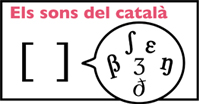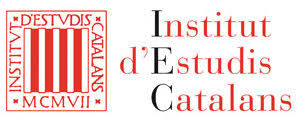Home
Aim
This website contains several resources and materials that were created to achieve the following aims:
- Make the teaching of Catalan phonetics easer within the subjects of Higher Education, Secondary Education and other educational programs that include the study of Phonetics.
- Help Catalan graduate and undergraduate students of those degrees that have phonetics and phonology as object of study or as a working means (such as Philology, Speech Therapy, Linguistics, Translation, Communication, Journalism, among others) in learning both disciplines autonomously, in accordance with the European Higher Education Area guidelines.
- Encourage students to learn this discipline in an autonomous way, in accordance with the European Higher Education Area guidelines.
- Improve the teaching of Catalan as a foreign language (by furnishing the learner of Catalan as L2 with the basic devices to learn the main features concerning the production and perception of Catalan sounds).
- Provide Internet support materials and resources to those professionals working in fields such as language advising and speech therap.
- Assist in teaching and learning the mechanisms of production, transmission and perception of Catalan sounds.
Contents
Thus far the website contains the sounds of Central Catalan, North-Western Catalan and Central Valencian but our ultimate goal is to include the sounds of Balearic Catalan and thus cover all four major Catalan dialects. It will also contain general and specific exercises for each dialect. The website is organized to be optimally user-friendly.
In the Phonemic Chart section users will find interactive tables for each dialect that contain the phonetic symbols corresponding to vowel and consonant sounds, which are grouped according to the place and manner of articulation. When the cursor is placed on a phonetic symbol, a pop-up window appears, that contains a description of that sound's articulatory features as well as the origin of the phonetic symbol. When the cursor is placed on an articulation place or manner, another pop-up explains which organs are involved in the production of that sound and how they do it. Below the chart the user will find tables describing the diacritical and suprasegmental marks used in the phonetic transcription of Catalan sounds to the left, and to the right a smaller vowel chart that situates each vowel in terms of tongue advancement and elevation. Clicking on the symbol of any consonant or vowel on the page will call up a new window showing:
- A list of words which contain the selected sound.
- A video showing native speakers articulating the sound in different contexts.
- An animated diagram (available in Flash and You Tube) which shows the airflow trajectory and movement of the articulatory organs involved in articulating that particular sound.
- A spectrogram and oscillogram followed by several audio clips that correspond to the different words pronounced by the native speakers.
- A link called "Palatograms and MRI cross-sections" which, for most of the sounds, opens a pop-up showing a palatogram with information about tongue-palate contact and/or MRI stills and videos.
- A link called "Parts of the vocal tract", which opens an interactive articulatory diagram where the various parts of the vocal tract are labelled.
- A section for comparison of sounds.
- A comprehensive glossary with all the terms related to phonetics and phonology.
Finally clicking on the "Comparative sound chart" link leads the user to a page that includes three Flash animated articulatory diagrams by which where the user can choose and simultaneously view the articulatory diagrams of three different consonant or vowel sounds in order to compare them.
Instructions for users
- To learn about a specific sound, click on the relevant phonetic symbol in the Phonemic Chart.
- You can select a specific video by clicking on a word from the list.
- Click on the spectrograms and the photographic images to watch the videos or see a larger version of the image.
- Click on a word from the acoustic features list to see its spectograms and oscillograms.
- Spectograms can be viewed with delimited or non-delimited sound by clicking on the respective header above the image.
Note
- We recommend that you view this website using the most recent versions of Chrome v. 30, Firefox v. 24 or Safari 7.
- In order to visualize the animated articulatory diagrams, you will need to have installed Adobe Flash Player.







